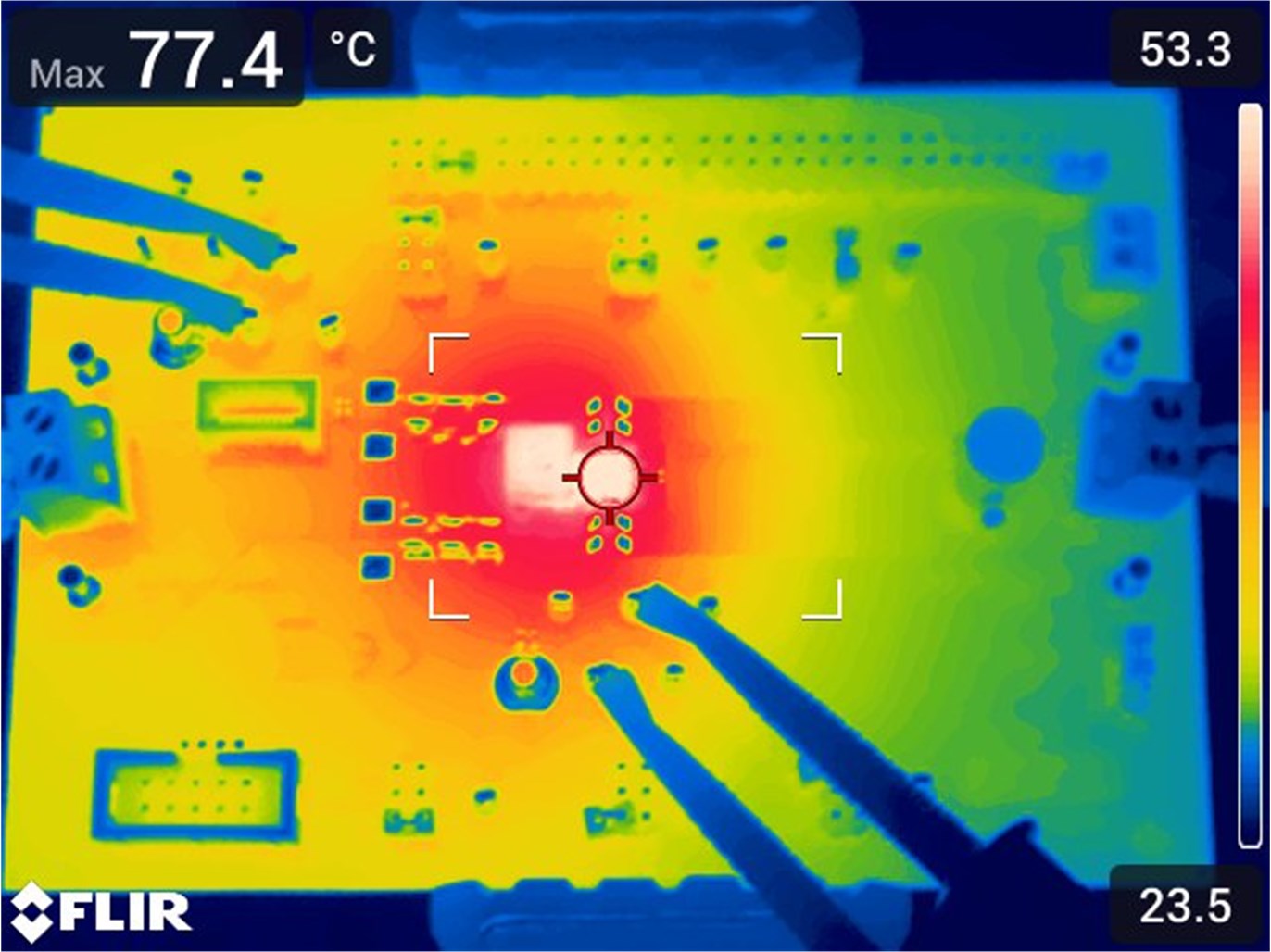SLVUCX1 September 2024 TPS548B23
3.1.7 Thermal Performance
The temperature rise of the TPS548B23 ICs at full 20A load is shown in Figure 3-13. A minimum of 10 minutes for soak time was used before taking each measurement.
 Figure 3-13 Thermal Performance – 20A
Load
Figure 3-13 Thermal Performance – 20A
Load